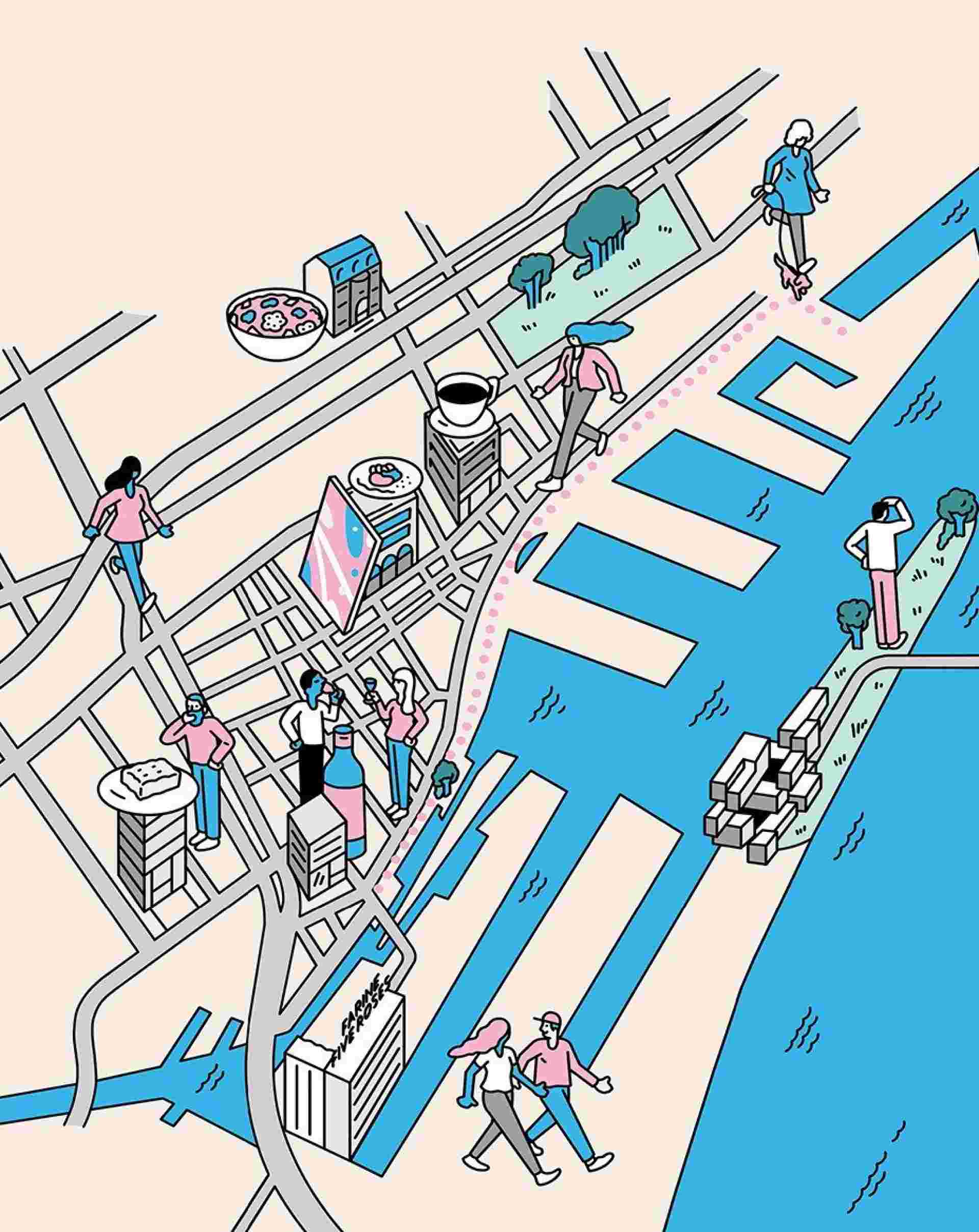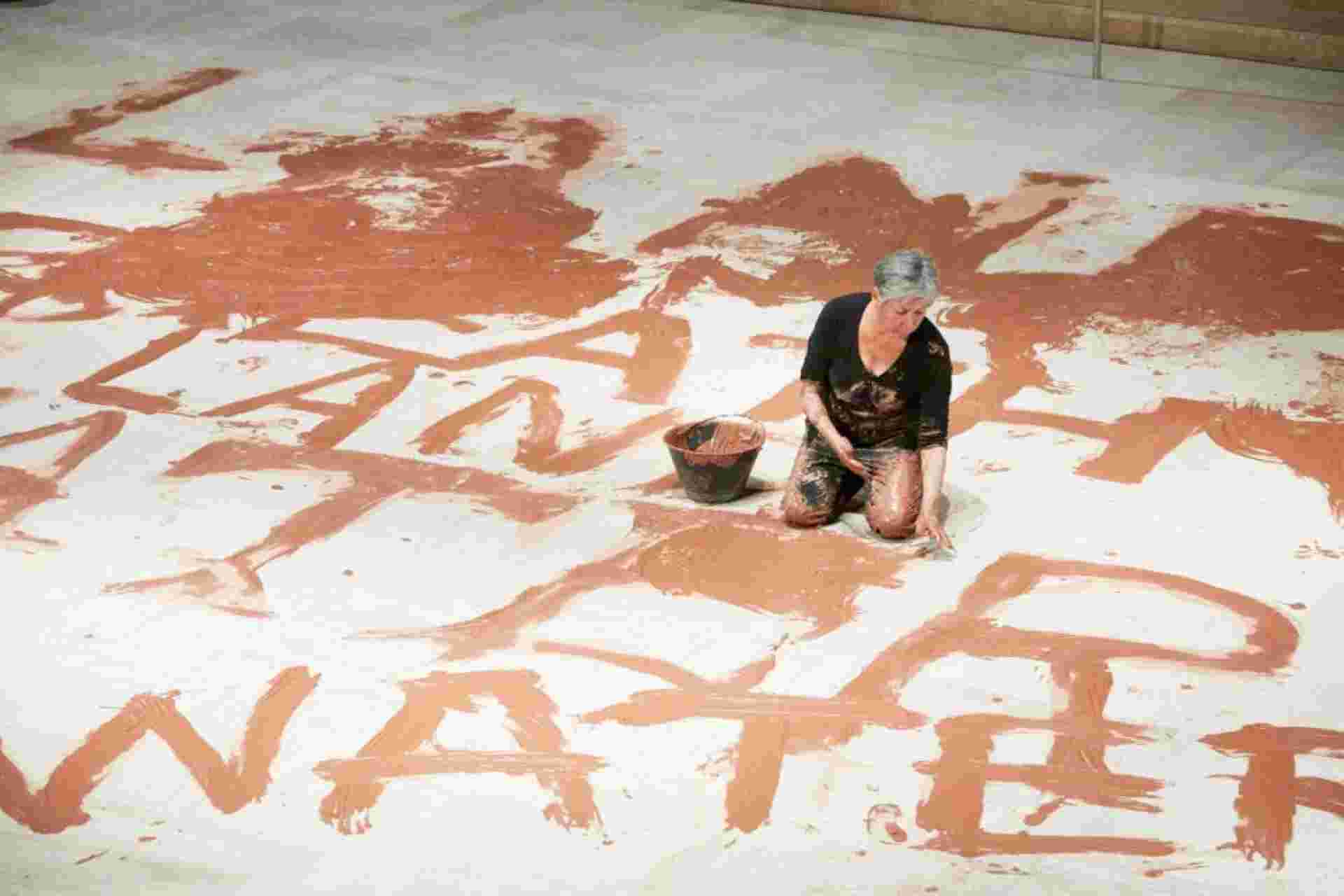
111 Robert- Bourassa
Sights and strolling around Montreal’s Cité Multimédia
BY: Wanda Nanibush and Andrea Fatona
ARTWORK ©: Rebecca Belmore
PHOTO COURTESY OF: Art Gallery of Ontario

Wanda Nanibush: Before coming to the AGO, I was involved in Idle No More for three years. It informed a lot of my early strategies in thinking through sovereignty and carving out space in the museum—and not in a slow way, not incrementally.
Andrea Fatona: So how have you been doing in terms of trying to centre Indigeneity within the framework of that space?
WN: The museum shows what it values by what it gives space to—and where that space is. At the AGO, the Indigenous gallery was a hallway outside the bathroom.
We [transformed] the McLean Centre into the Indigenous & Canadian Art Centre, grabbing a bunch more space and expanding Inuit art into four other gallery spaces. And we’ve been trying to take over the centre of the building—Walker Court—which Anishinaabe artist Robert Houle has been engaged in since 1993. Indigenous folks, when they step into that space and are surrounded by Robert’s seven grandfather drums, feel like it’s their space too. I invited Rebecca Belmore to do an abstract clay painting on the floor, and she very much wanted to do it there because of those drums. It was an homage, in a way, to her own artistic lineage. We now call it Anishinaabe Walker Court. It’s not official, but we’re hoping one day it will be.
We’re bringing the outside in—the outside values that are contained within the seven grandfathers, which is Anishinaabe philosophy and a way of being, and then also the organic material that Rebecca’s working with. Museums that are colonial are used to drawing, painting and sculpture. They’re not made for the practices of our artists, which are performance- and installation-based and use multimedia and organic materials.
“The museum shows what it values by what it gives space to—and where that space is.”
AF: What really struck me is that you talk about land claims within the gallery, as opposed to the regular nomenclature of “real estate.” That shift [in language] is a kind of excising and bringing in the politics of space, land, peoples, other cosmologies and beings. Changing that terminology and bringing those politics in is so important for shifting the ground within these colonial spaces.
WN: [Artist and curator] Jolene Rickard always says sovereignty is an action, not a thing. That’s the part the institution really struggles with, because so much has to change—the value system and foundation that it rests on. You can’t totally and immediately deconstruct the hierarchies of power, in terms of where the money comes from and the structure of decision-making. But if you keep working, it reverberates. It’s like with our elders: They don’t tell us what to do; they display it through action. You learn by watching, listening and being with them. The institution is learning from us and our actions.
AF: Let’s talk about the ways in which rage can help us get to something else. For me, that’s part of how we connect these struggles—be it Palestine, Indigenous displacement or the destruction of Black life. There’s something about rage that brings us together. But it’s also generative; it helps us get to that other place that we might call the “de-colonial.” And it’s the thing that I think many of our institutions try to shut down.
WN: Rage is something I use to keep myself from crying. When I’m hurt, rage helps me through it so I’m not so vulnerable in that moment. But also, from an Anishinaabe point of view, you have to be in touch with your vulnerability while you fight so you don’t become performative without really doing the work to make things happen.
AF: Although there’s so much rage, the rest of the world continues to move along as if [these injustices are] an aberration. They’re not an aberration. And so there’s also a sadness as a result of turning a blind eye to the ways in which all of this is related back to capitalist, patriarchal, heteronormative societies that have gained their strength from nationalist ideas. The whole thing is so tightly related, as Angela Davis has said, yet we keep atomizing it.
WN: That sadness—that’s how I began my day today, and that’s how I will end it. That sadness is centuries old for Black and Indigenous folks. But that’s also what drives me. Sometimes I wonder: “How did I—growing up on a reserve, based on an apartheid system, isolated from the world—end up in the Middle East? How did I end up in these conversations about slavery?” It’s that sadness and relationship with oppression that drive your relationship with other people. How can you not hear their pain? How can you not do something?
AF: The other thing that’s really important for me is the need to recoup those practices that were taken or erased and reshape them. How do we do the hard work of reaching back, particularly for those of us who don’t have a portal? The project I’m working on, The State of Blackness, is a platform that documents those histories so we don’t have to keep recreating the wheel, taking energy away from doing the work of transformation. Art, I believe, is another way.
WN: And [as curators], we pull it out through the artists we work with. It’s a subtle thing, but that’s why I do this work—because I want to dive into these complex issues and bring this knowledge out of the artwork and to an audience.
AF: I’m quite grateful for this moment. There’s a critical mass of us engaged in this work in different ways, in different institutions and outside of them. What’s really hopeful for me is that we know of each other. And I feel we have the knowledge, skill set and criticality to make an indelible mark. I truly believe we are at the place where we can start making some deep shifts within these institutions.
WN: I also gather a lot of hope from the fact that we stand up for each other and with each other. The rise of this virulent form of racism that’s always been present but that’s become so visible and violent worldwide [is because] they know they’re dying out and those ideas are dying out. The death knell has been rung. We’ve got to keep pushing, but we will win.